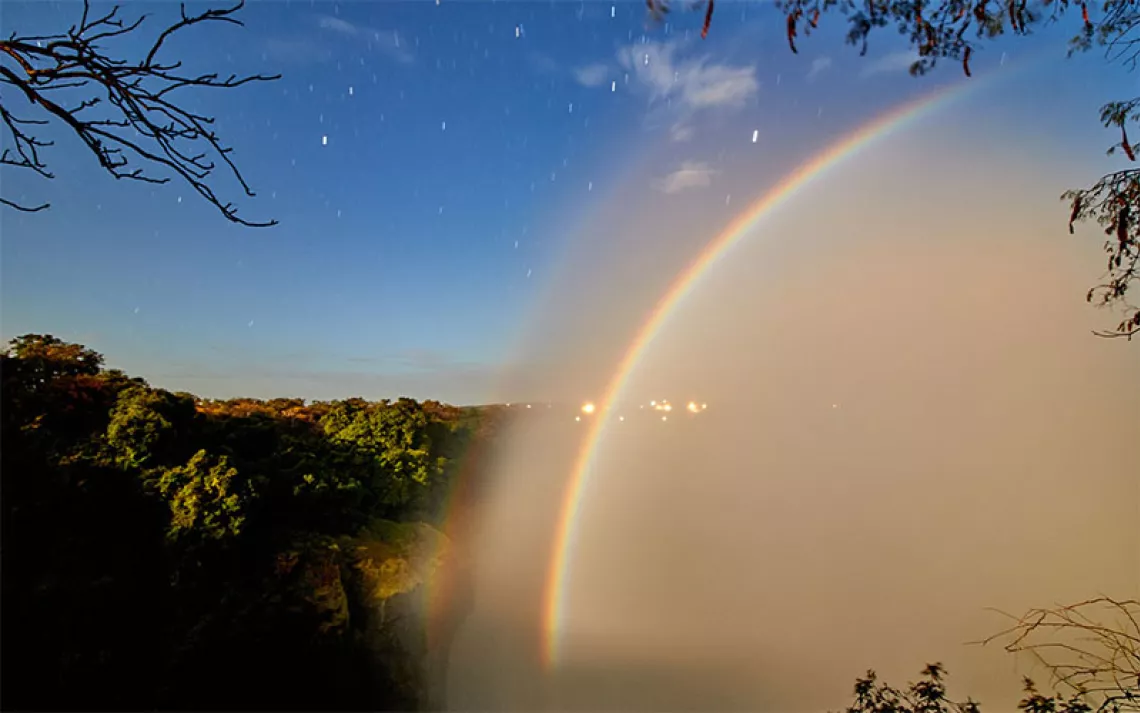February Observing Highlight: Winter Hexagon

Photo courtesy of iStockphoto/Rastan
Throughout most of February, the five brightest planets—Mercury, Venus, Jupiter, Saturn, and Mars—continue to hang out in the morning sky, stretching from the southeastern horizon just before sunrise low across the south, almost to the western horizon where Jupiter brings up the tail.
You won’t see the planets in order of distance to us or from the sun. On the first day of February, Mercury and Venus are closest to the southeastern horizon. Saturn is in the south, halfway between the two-planet cluster, while a half-lit moon and its reddish companion, Mars, are a couple degrees away. Jupiter sits back near the western horizon.
The moon hopscotches from Mars to Saturn on February 3, then makes a triangle with Venus and Mercury on February 6, when it has shrunk to less than 5 percent illuminated, making a pretty crescent and a great photo op. Later in the month, as the sun rises earlier and the days become longer, it will be hard to see Mercury with the rosy light of dawn interfering.
Jupiter is also visible in the evening sky, the only planet to appear at a decent hour for nighttime viewing. February’s full moon occurs on the 22nd at 10:19 A.M. PST, and then on the next night, a just-past-full moon is only two degrees from Jupiter. Our solar system’s largest planet ends February less than half of a degree from the star Sigma Leonis, which marks the hind leg in Leo the Lion.
On February 15, the moon passes through the Hyades star cluster in Taurus and from certain locations will appear to pass right over the reddish-orange star Aldebaran. For example, in San Diego, observers can watch the moon occult Aldebaran just after 1 A.M. on the morning of February 16.

Make every day an Earth Day
Get articles like this one sent directly to your inbox.
With this action you affirm you want to receive Sierra Club communications and may vote on policy designated by the Sierra Club Board.
In winter, people are less inclined to haul out telescopes and take the time to track down deep-sky objects. Glimpses of bright planets through the car window are more likely. So keep an eye out for the Winter Hexagon, which is easy to track down, with the most visible stars in the winter sky.
Look toward the south to find its brightest star, Sirius. Moving clockwise, you’ll find Procyon, Pollux (a bit brighter than its “twin,” Castor), Capella (near 12 o’clock if you consider Sirius 6 o’clock), Aldebaran, and Rigel (at the foot of Orion). A seventh bright star, Betelgeuse, can be found inside the hexagon. Betelgeuse will undergo a supernova someday and temporarily be as bright as the moon in our sky.
Stars like those in the Winter Hexagon are actually anomalies in the night sky. Massive, luminous stars are rare, yet because they’re bright and grab our attention, they’re the ones that dictate the constellation and asterism patterns we see in the sky. Approximately 85 percent of the stars in our galaxy are red dwarfs—stars so dim that none of them can be seen with the unaided eye.
 The Magazine of The Sierra Club
The Magazine of The Sierra Club



